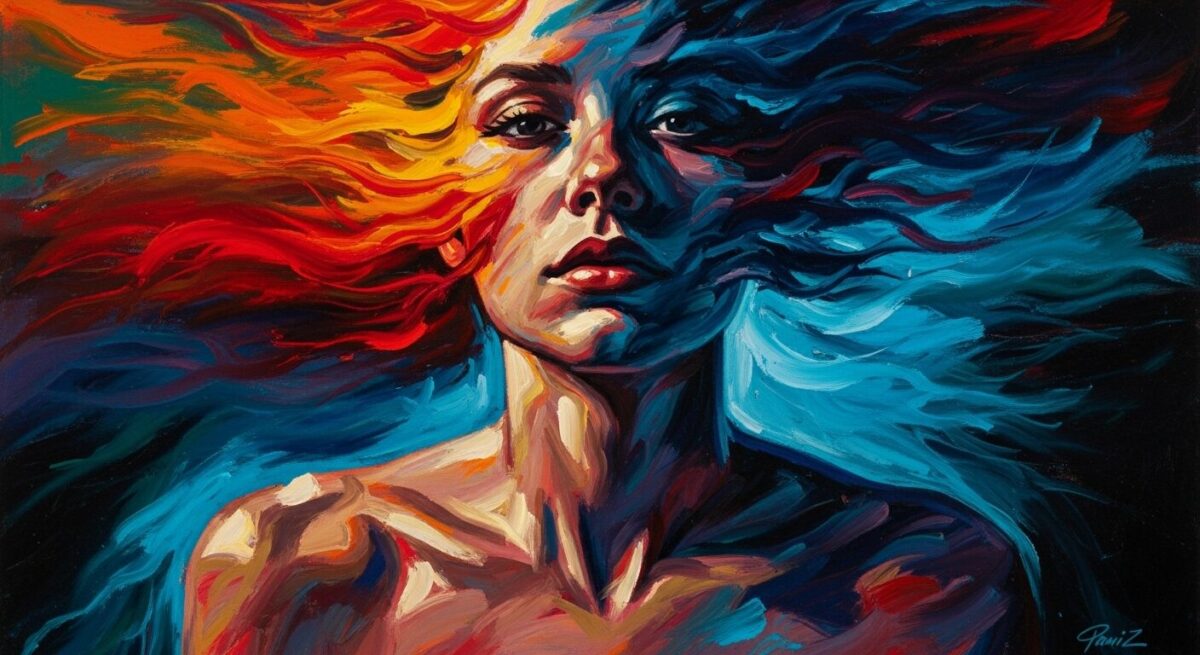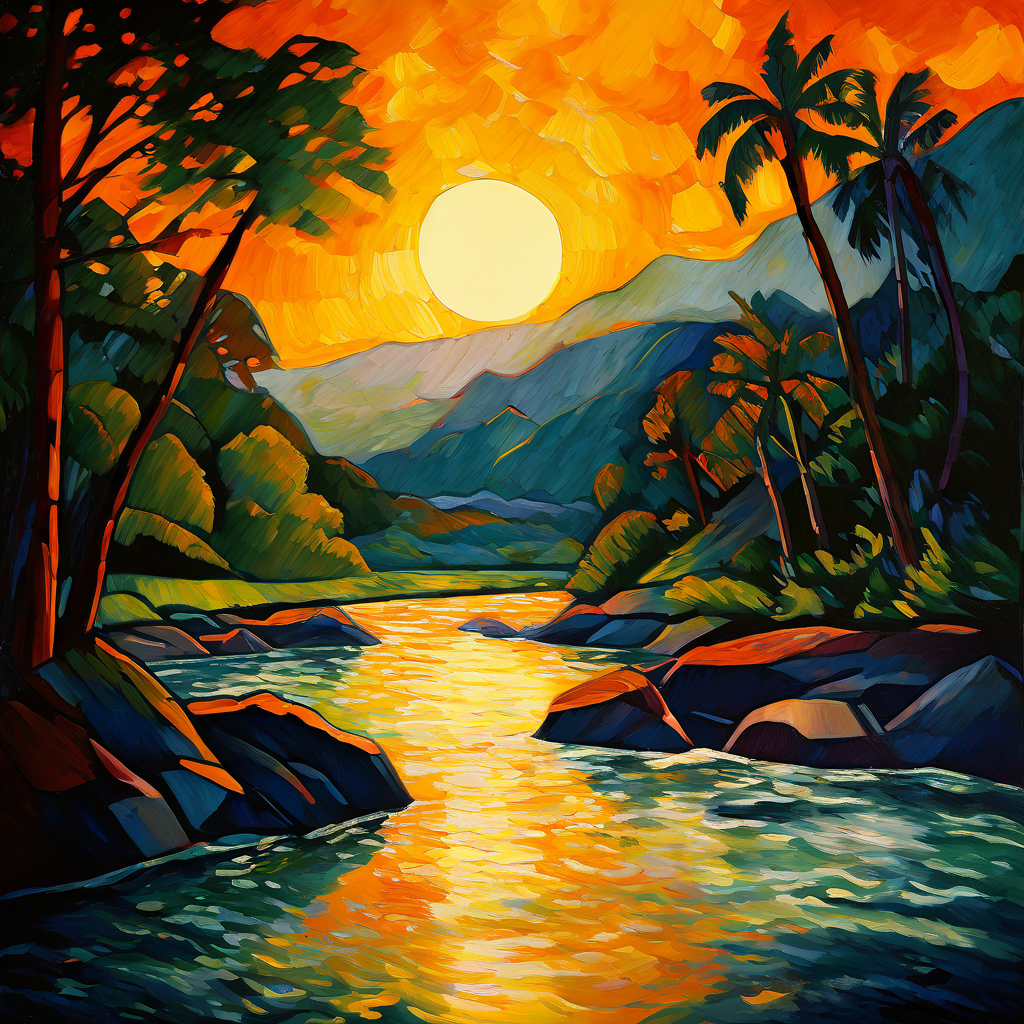Explore the vibrant world of modern impressionist artists. Discover contemporary painters pushing boundaries, from palette knife masters to abstract expressionists. Find your next artistic inspiration!
The world of art is in constant flux, yet the echoes of historical movements continue to inspire contemporary creation. Among these, Impressionism, with its revolutionary approach to light and color, has found a powerful resurgence in the work of modern impressionist artists. These contemporary painters, while rooted in the principles of their 19th-century predecessors, are pushing boundaries, interpreting classic techniques through a fresh, modern lens, and creating a vibrant dialogue between past and present.
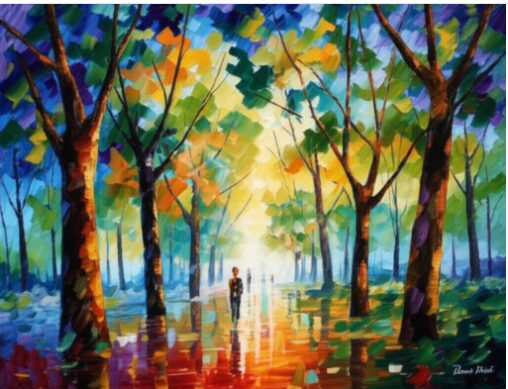
Bulleted Keypoint Summary
- Defining Modern Impressionism: Contemporary artists continue to focus on light, color, and visible brushstrokes, often adapting these elements to new subjects and modern sensibilities.
- Diverse Interpretations: While drawing from Impressionist roots, modern practitioners integrate abstract, expressionistic, and even cubist influences.
- Palette Knife Mastery: Many contemporary artists, like Daniel Wall and Sam Park, employ the palette knife for bold textures and fine details.
- Exploration of Identity and Narrative: Artists such as Salman Toor infuse impressionistic qualities with personal narratives, including queer and cultural themes.
- Reinventing Plein Air: The practice of painting outdoors remains significant for some, while others translate observations into studio works.
- Global Reach: Modern impressionist artists hail from diverse backgrounds, bringing unique cultural perspectives to the movement.
The Enduring Legacy: What Defines Modern Impressionism Today?
Impressionism, born in 19th-century France, revolutionized art by prioritizing the fleeting visual impression over detailed realism. Today, modern impressionist artists carry this torch forward, not by simply replicating the past, but by evolving its core tenets. They are captivated by the transient qualities of light and color, the spontaneity of visible brushstrokes, and the beauty found in everyday subjects. However, contemporary Impressionism often integrates new perspectives, mediums, and themes, making it a dynamic and ever-evolving art form.
These artists skillfully interpret how light transforms a scene, using vibrant, often unblended colors to convey atmosphere. Their work frequently features loose, spontaneous, and impasto brushwork, creating a sense of movement and immediacy that allows the viewer’s eye to mix the colors on the canvas. Many still find inspiration in landscapes, urban scenes, and intimate moments, sometimes working en plein air—a technique central to original Impressionists—to directly observe their environment. The goal remains to capture a particular “impression” of a moment in time, but with a sensibility that reflects the complexities of the 21st century. To learn more about the foundational movement, explore our article on the history of Impressionism.
Pioneers of the Contemporary Brush: Notable Modern Impressionist Artists
Let’s delve into the works of some prominent modern impressionist artists who are redefining the genre.
Daniel Wall’s “Intense Impressionism”: A Palette Knife Revolution
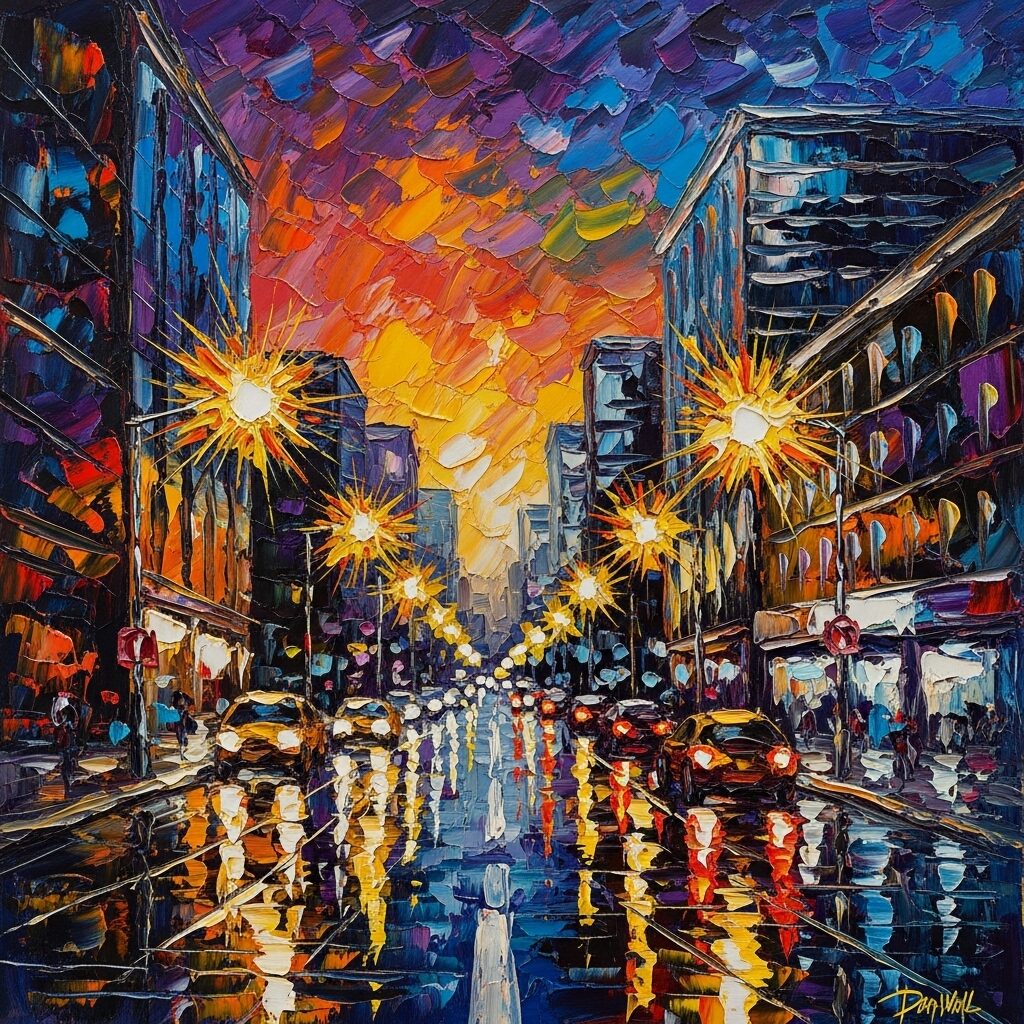
Daniel Wall Intense Impressionism marks a significant evolution in the modern art movement. Born in China in 1965, Wall has developed a unique style he terms “extreme impressionism,” which takes the principles of Impressionism and amplifies them with heightened intensity and contemporary relevance. His work is characterized by vibrant, intensified colors, dramatic and heavy textures, and bold, conspicuous strokes that reflect the intensity of modern life.
Wall exclusively uses a palette knife for his oil paintings, even for minute details, creating thick impasto and textured surfaces. This technique, a departure from traditional brushes, allows him to mix colors directly on the canvas, achieving unique hues and tactile effects. Influenced by Impressionist masters like Claude Monet, Camille Pissarro, and Georges Seurat, Daniel Wall also seamlessly incorporates “dry-brush” calligraphy techniques from 2,000-year-old Eastern artistic traditions into his contemporary landscape art and cityscapes. Notable works like Charleston Waterfront and Magnificent Manhattan exemplify his ability to inspire joy and appreciation for daily beauty through his vibrant colors and exaggerated light effects. Discover more about palette knife painting techniques.
Sam Park: The Neo-Impressionist Master of Idealized Landscapes
Sam Park Neo-Impressionism presents an idealized vision of the world, built on the foundations of French Impressionism but with a distinct modern twist. This Korean-American artist, born in Seoul in 1949, creates serene art, often depicting picturesque European cityscapes and idealized landscapes that evoke harmony and tranquility. Park’s “New Impressionism” distinguishes itself by combining freely brushed colors with a pursuit of rich colors, detailed configurations, and a hyper-realistic feel.
Similar to Daniel Wall, Sam Park predominantly uses a palette knife, mastering it to achieve remarkable fine details alongside bold, thick textures. He often begins by capturing the sky, then the sea, and finally fills in the elements in between, aiming for “deeper and fresher” art than 19th-century Impressionism. Works like Capri and Haut de Cagne showcase his ability to infuse vibrant light and awe-inspiring color combinations into contemporary landscape painting. His Amalfi Coast paintings are particularly famous for their captivating beauty.
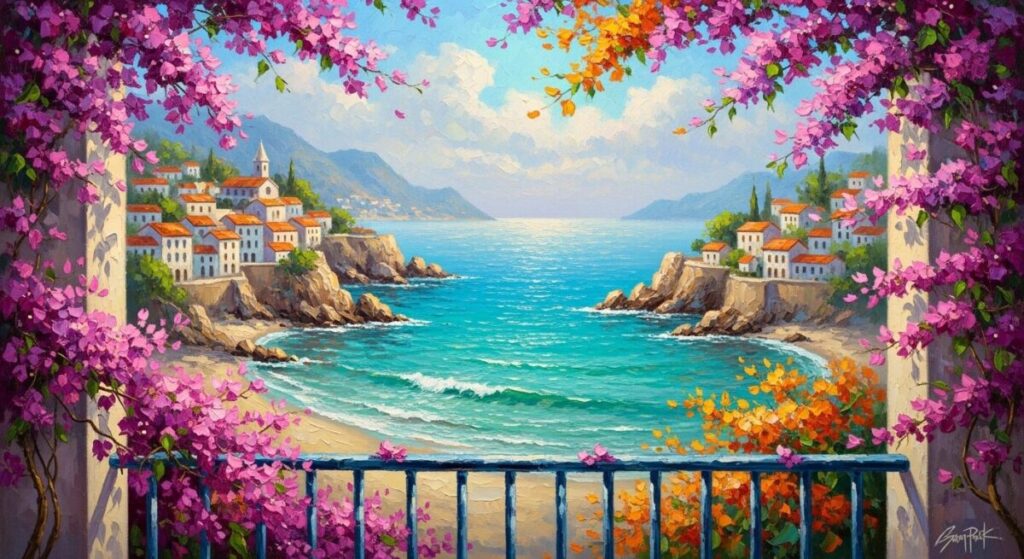
Salman Toor: Blending Old Masters with Queer Contemporary Impressionism
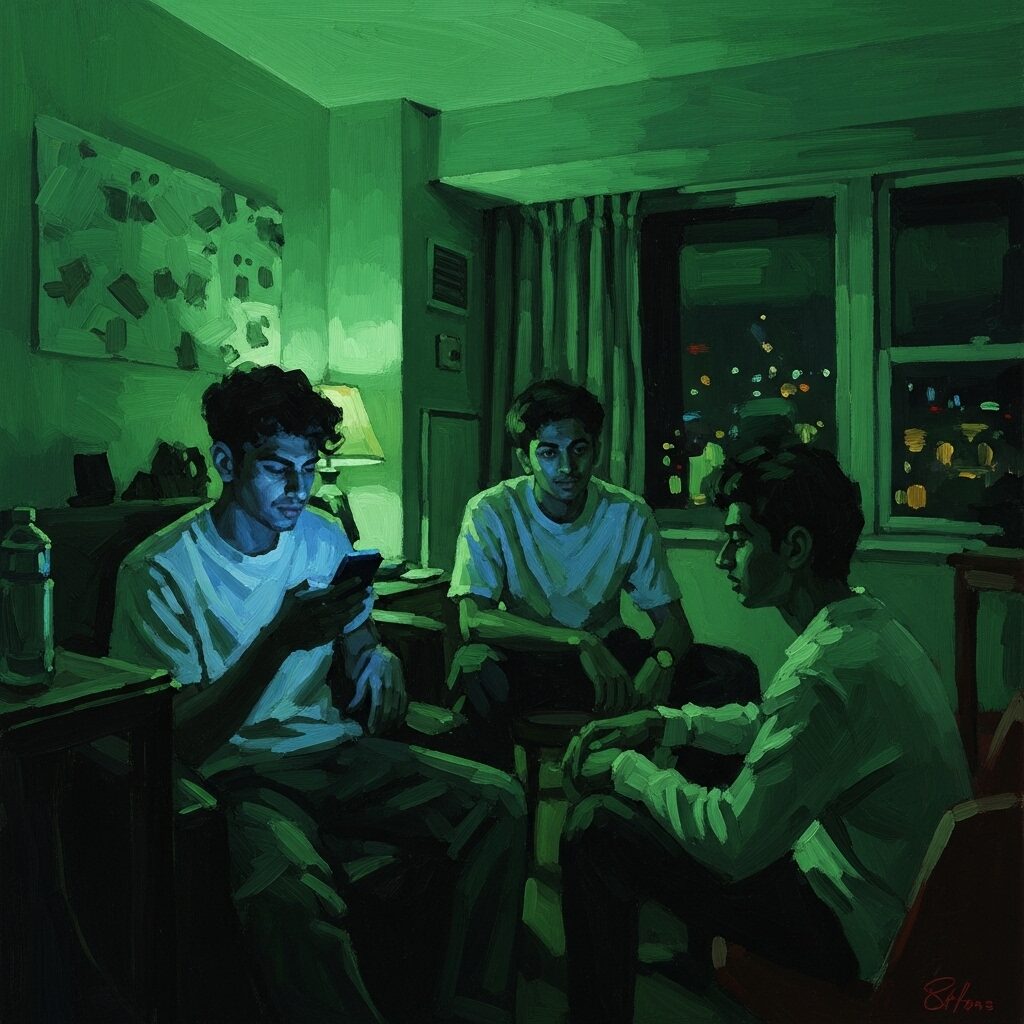
While not strictly a traditional Impressionist, Salman Toor contemporary impressionism offers a unique blend of historical reverence and modern narrative. This Pakistani-American painter is celebrated for his figurative art, which depicts the intimate lives of young, queer, South Asian men in New York City. His work possesses an impressionistic quality through its expressive brushwork and evocative use of color to capture atmosphere and emotion, reminiscent of Old Masters but with a distinctly contemporary voice.
Toor’s technique involves short, sketch-like brushstrokes that create a sense of fluid, entangled forms. A signature element is his intentional, non-naturalistic use of an emerald green palette, which he describes as having a “flickering light that’s nocturnal and poisonous,” creating both warmth and coolness in his intimate scenes. Influenced by Baroque and Rococo artists like Caravaggio, Toor merges modernist impulses with European Old Master techniques, bridging cultures and eras. Pieces such as The Star, Bar Boy, and Four Friends offer powerful social commentary, challenging historical invisibility and celebrating queer art. For an understanding of figurative art, visit our guide on figurative art explained.
Paul Verdell: A Modern Impressionist Painter Pushing Abstract Expression
Paul Verdell modern impressionist style is a vibrant exploration that pushes the boundaries of traditional Impressionism towards abstract expression. Born in Long Beach, California, in 1991, Verdell is a contemporary American artist known for his expressive and intuitive mark-making. He works primarily with oil pastels, oil sticks, and oil paints, creating compositions where vibrant colors often become flesh and limbs, and figures can merge with their surroundings.
Verdell’s paintings feature striking, dramatic, and colorful compositions, focusing on conveying mood and intuition through simplified figures and saturated colors. His approach is often autobiographical, working with live models to allow their spirit to permeate the artwork. During a residency at Kehinde Wiley’s Black Rock Senegal, Verdell even explored abstraction with loose, wild gestures inspired by natural phenomena. Works like A Road to Glory exemplify his pursuit of transient beauty and fluid figurative work, placing him firmly among innovative modern impressionist artists.
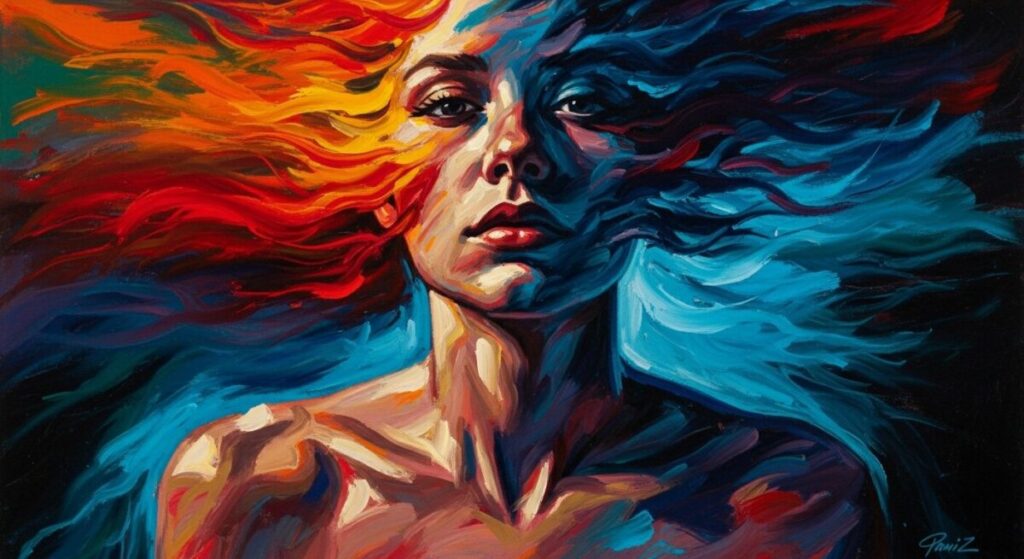
Mia Chaplin: Emotion and Impasto in Modern Figures
Mia Chaplin, a South African artist born in 1990, employs free and unpredictable brushstrokes that echo the spontaneity of Impressionist paintings. Her work, often featuring female figures, is characterized by agitated, impasto work that reflects a deep subjectivity and emotionality. Chaplin’s heavy use of impasto creates a tactile texture, making her figures appear as blurry, interwoven compositions, sometimes indistinguishable from their environments. Her palette frequently revolves around the “pinks, peaches and browns of human flesh,” often with muted tones that suggest decay and renewal. She masterfully captures moments, exploring themes of sexuality, intimacy, and the tumultuous nature of female existence, making her a compelling voice among modern impressionist artists.
David Hockney: Impressionist Echoes in Contemporary Landscapes
David Hockney, a highly influential contemporary British artist, while known for Pop Art, has openly acknowledged a significant influence from Impressionism, especially in his landscape paintings. His fascination with the play of light, vibrant hues, and transient qualities of the natural world directly reflects Impressionist principles. Hockney’s adoption of the en plein air technique, particularly for his large-scale Yorkshire landscapes, demonstrates his deep appreciation for capturing the changing quality of light. He often pushes these ideas further, exaggerating and distorting color and form to create a distinctly contemporary feel. Works like A Bigger Splash and Moving Wisp showcase his repertoire of mark-making borrowed from Impressionists and Post-Impressionists. Explore how color is used in art with our guide on understanding color theory.
Thomas Andréa Barbey: Pointillist Traditions Reimagined
Thomas Andréa Barbey, a French artist, offers a modern reinterpretation of the Post-Impressionist Pointillist tradition. He meticulously uses dots of tempera paint to illustrate light across landscapes and interiors, focusing on pure color and avoiding shade. Barbey’s precise, almost mechanical application of standardized colored dots creates images that appear “pixelated,” yet convey the fleeting “snapshot” quality of an Impressionist scene. This meticulous technique, seen in works like Soleil Couchant sur la Mer de l’Ouest, bridges a historical artistic lexicon with contemporary sensibilities, making him a unique contributor to modern art movements. Learn about the legacy of Post-Impressionism.
Beatrice Meoni: Fleeting Moments in Cluttered Interiors
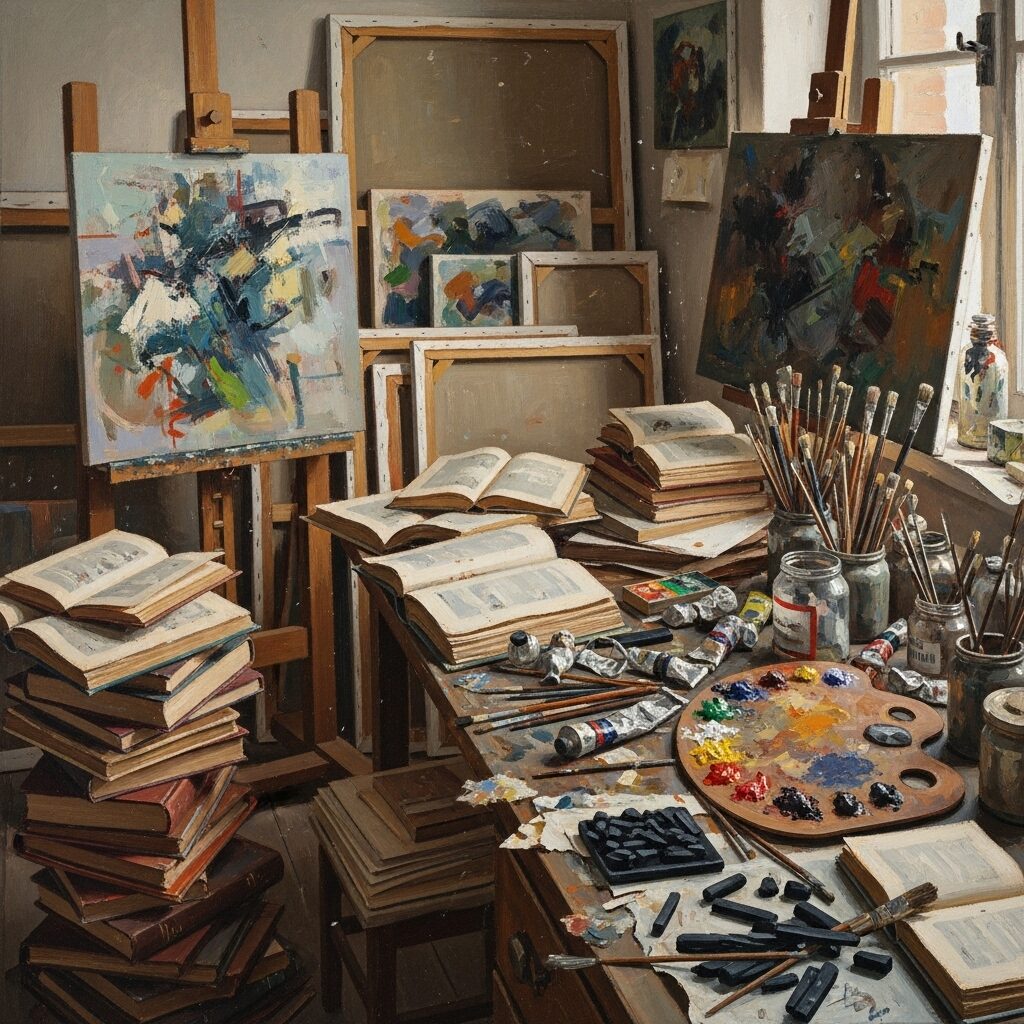
Beatrice Meoni, an Italian artist, captures fleeting moments of everyday life in her distinctive style, embodying the spirit of modern impressionist artists. Her paintings often feature cluttered interiors and personal spaces, depicted with haphazard strokes of color rather than clear lines. Meoni’s brushwork intentionally obscures definition and details, presenting scenes as if viewed in a passing glance, reminiscent of her Impressionist predecessors. Her work, such as the “Lo Studio” series, explores the intersection of figurativeness and abstraction, reinventing everyday objects to convey new meanings and a sense of lived experience, even in the absence of figures.
The Enduring Appeal of Modern Impressionism
The continued relevance of Impressionism in contemporary art highlights its timeless appeal. Modern impressionist artists are not simply replicating the past; they are engaging in a dynamic dialogue with it, adapting its core principles to reflect our current world. Their emphasis on capturing light, color, and fleeting moments, combined with individual innovation in technique and subject matter, ensures that Impressionism remains a vibrant and influential force in art education and practice today. Whether through the bold palette knife work of Daniel Wall, the idealized landscapes of Sam Park, the expressive figures of Salman Toor, or the abstract leanings of Paul Verdell, these artists continue to inspire, pushing the boundaries of what an “impression” can be. For those interested in painting techniques, visit our page on oil painting techniques.
Frequently Asked Questions
What defines modern impressionist art today?
Modern impressionist art is defined by contemporary artists who adapt the core principles of 19th-century Impressionism—focus on light and color, visible brushstrokes, and capturing fleeting moments—to explore new subjects and incorporate modern sensibilities, often blending it with other styles like abstract expressionism or hyperrealism.
How do modern impressionist artists interpret light and color in their work?
Modern impressionist artists continue to be captivated by how light transforms a scene. They use vibrant, often unblended, colors to convey its effects and atmosphere, frequently exaggerating or distorting color and form to create a distinctly contemporary feel, as seen in artists like David Hockney and Daniel Wall.
Do modern impressionist painters use visible brushstrokes like their predecessors?
Yes, visible, loose, spontaneous, and often impasto brushwork remains a hallmark for many modern impressionist painters. Artists like Mia Chaplin and Paul Verdell utilize expressive and intuitive mark-making to create a sense of movement and immediacy, though some, like Daniel Wall and Sam Park, achieve similar effects with palette knives.
Are contemporary impressionist artists still painting en plein air?
Many contemporary impressionist artists continue to find inspiration in painting outdoors (en plein air), much like their predecessors. Artists such as David Hockney adopt this technique to directly observe and capture the changing quality of light in their environments, while others translate these observations into studio works.
Who are some notable modern impressionist artists?
Notable modern impressionist artists include Daniel Wall (“Intense Impressionism”), Sam Park (“New Impressionism”), Paul Verdell (blending with abstract expression), Mia Chaplin (expressive figures), Thomas Andréa Barbey (Pointillist traditions), Beatrice Meoni (fleeting moments in interiors), and David Hockney (with strong Impressionist influences in landscapes).
What artistic styles and techniques does Paul Verdell use?
Paul Verdell uses pure, bright colors and intuitive brushwork, pushing the Impressionist pursuit of transient beauty towards abstract expression. He primarily works with oil pastels, oil sticks, and oil paints, characterized by expressive mark-making, fluid figurative work, and compositions where vibrant colors and figures merge.
How does Mia Chaplin’s work reflect modern impressionism?
Mia Chaplin’s work reflects modern impressionism through her free and unpredictable brushstrokes, echoing the spontaneity of the original movement. She uses agitated, impasto work, often depicting female figures with blurred features, to convey subjectivity and emotionality, drawing parallels to Post-Impressionists.
What is Sam Park’s “New Impressionism” style?
Sam Park’s “New Impressionism” builds on traditional Impressionist foundations by combining freely brushed colors and inviting compositions with contemporary texture, light, and fine detail. He often uses a palette knife to create idealized landscapes and cityscapes with a vibrant, hyper-realistic feel, aiming for a “deeper and fresher” art.
What techniques does Daniel Wall use to create “Intense Impressionism”?
Daniel Wall creates “Intense Impressionism” by exclusively using a palette knife to apply thick oil paint, resulting in heavy textures, bold strokes, and intensified vibrant colors. His technique blends Western Impressionist influences with “dry-brush” calligraphy from Eastern traditions to exaggerate light effects.
How has David Hockney been influenced by Impressionism?
David Hockney has been influenced by Impressionism through his fascination with light, vibrant hues, and the transient qualities of the natural world. He often employs the en plein air technique in his landscapes and uses varied mark-making, including dots and broad strokes, reminiscent of Impressionist and Post-Impressionist masters, while adding his own contemporary exaggeration.
What themes do modern impressionist artists typically explore?
Modern impressionist artists typically explore themes such as the transient beauty of light and color, everyday life, urban and natural landscapes, and personal narratives. Some artists, like Salman Toor, also delve into themes of identity, social commentary, and the complexities of contemporary human experience within an impressionistic framework.
How does Thomas Andréa Barbey incorporate Pointillist traditions into his modern art?
Thomas Andréa Barbey incorporates Pointillist traditions by meticulously using dots of tempera paint to illustrate light across landscapes and interiors. His “pixelated” application of unified, standardized colored dots, without the use of shade, creates an optical mixing effect that echoes divisionist methods while connecting to modern screen aesthetics.
What are the key characteristics of Beatrice Meoni’s paintings?
Beatrice Meoni’s paintings are characterized by haphazard strokes of color that articulate forms in cluttered interiors, obscuring details to capture fleeting moments. Her work explores the intersection of figurativeness and abstraction, imbuing everyday spaces with a sense of lived experience and focusing on the transformation of objects and bodies in space and time.
Is Salman Toor considered a modern impressionist artist, and what defines his style?
While not strictly a classical impressionist, Salman Toor is often associated with contemporary impressionism due to his expressive brushwork, evocative use of color, and focus on capturing atmosphere and emotion in intimate scenes. His style blends Old Master aesthetics with contemporary narratives, an intentional non-naturalistic emerald green palette, and figurative art exploring queer South Asian experiences.

